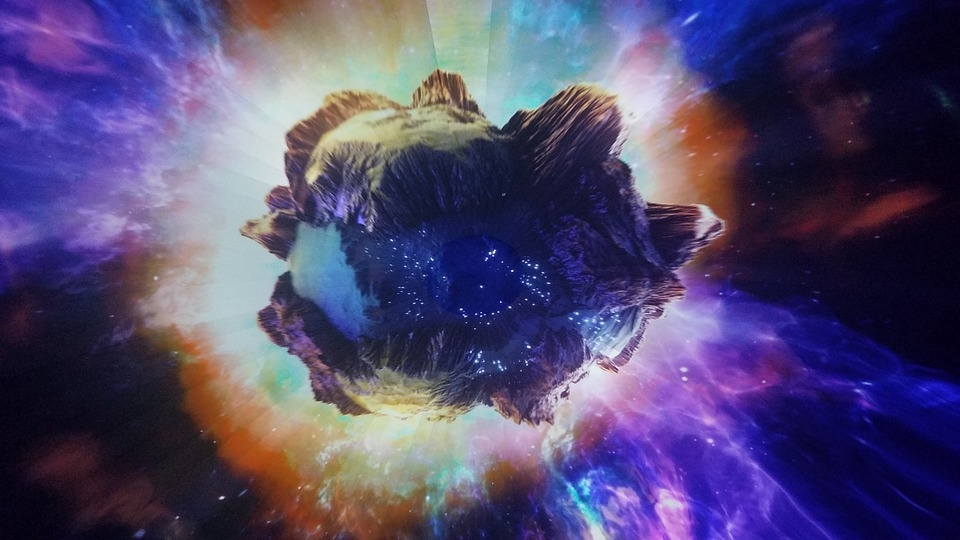Asteroids are among the objects many can see in space, and many of them approach the planet, passing by the Earth’s orbit and into other parts of the Solar System. A new report reveals that asteroids actually explode as its host stars die.
According to Popular Science, the space rocks with host stars wind up exploding when its star goes through the process of dying. When stars are dying, like what the Sun will be in the very far future, they go through a red giant phase and then shrink down into a white dwarf. It is in this white dwarf phase that they expel a lot of light and energy, and this light, when shone on the asteroids, will send the rocks spinning until it explodes into smaller debris made up of dirt and possibly traces of iron if the asteroid is “dirty.”
Those so-called dirty asteroids would be filled with iron or other kinds of metals that, when it explodes, leaves streaks when they hit the dying star before collapsing. As to why asteroids end up fragmenting when exposed to the cosmic energy radiating from these dying stars, it is down to their shapes and how they end up interacting with light. Because the asteroids are oddly shaped, they interact with light differently, sending the light and energy in various directions within the rock, and they start to spin until they ultimately explode. This is known as the YORP effect, named after the four scientists who explained this phenomenon: Yarkovsky, O’Keefe, Radzievskii, and Paddack.
Meanwhile, a group of international researchers was able to take a closer look into the asteroid known as Pallas. They conducted a study to be able to identify the size and shape of this space rock, and now it appears that they have the answer. They found that Pallas, named after the Greek goddess of wisdom Pallas Athena, actually resembles a golf ball due to its heavily cratered surface.
As to why the asteroid looks the way it looks, the researchers believe that its inclined orbit causes this space rock to collide with other rocks in a span of four and a half years that it takes to rotate around the Sun.



 The brightest object in the universe is a black hole that eats a star a day
The brightest object in the universe is a black hole that eats a star a day  Alpha, beta, theta: what are brain states and brain waves? And can we control them?
Alpha, beta, theta: what are brain states and brain waves? And can we control them?  The brain is the most complicated object in the universe. This is the story of scientists’ quest to decode it – and read people’s minds
The brain is the most complicated object in the universe. This is the story of scientists’ quest to decode it – and read people’s minds  Why now is the time to address humanity’s impact on the moon
Why now is the time to address humanity’s impact on the moon  Why is the universe ripping itself apart? A new study of exploding stars shows dark energy may be more complicated than we thought
Why is the universe ripping itself apart? A new study of exploding stars shows dark energy may be more complicated than we thought  If life exists on Jupiter’s moon Europa, scientists might soon be able to detect it
If life exists on Jupiter’s moon Europa, scientists might soon be able to detect it  Orbital resonance − the striking gravitational dance done by planets with aligning orbits
Orbital resonance − the striking gravitational dance done by planets with aligning orbits  Dark energy is one of the biggest puzzles in science and we're now a step closer to understanding it
Dark energy is one of the biggest puzzles in science and we're now a step closer to understanding it  Customizing mRNA is easy, and that's what makes it the next frontier for personalized medicine − a molecular biologist explains
Customizing mRNA is easy, and that's what makes it the next frontier for personalized medicine − a molecular biologist explains  Eggs from men, sperm from women: how stem cell science may change how we reproduce
Eggs from men, sperm from women: how stem cell science may change how we reproduce  The rising flood of space junk is a risk to us on Earth – and governments are on the hook
The rising flood of space junk is a risk to us on Earth – and governments are on the hook  Why some people don't trust science – and how to change their minds
Why some people don't trust science – and how to change their minds  Tatahouine: 'Star Wars meteorite' sheds light on the early Solar System
Tatahouine: 'Star Wars meteorite' sheds light on the early Solar System  Black hole, neutron star or something new? We discovered an object that defies explanation
Black hole, neutron star or something new? We discovered an object that defies explanation 































